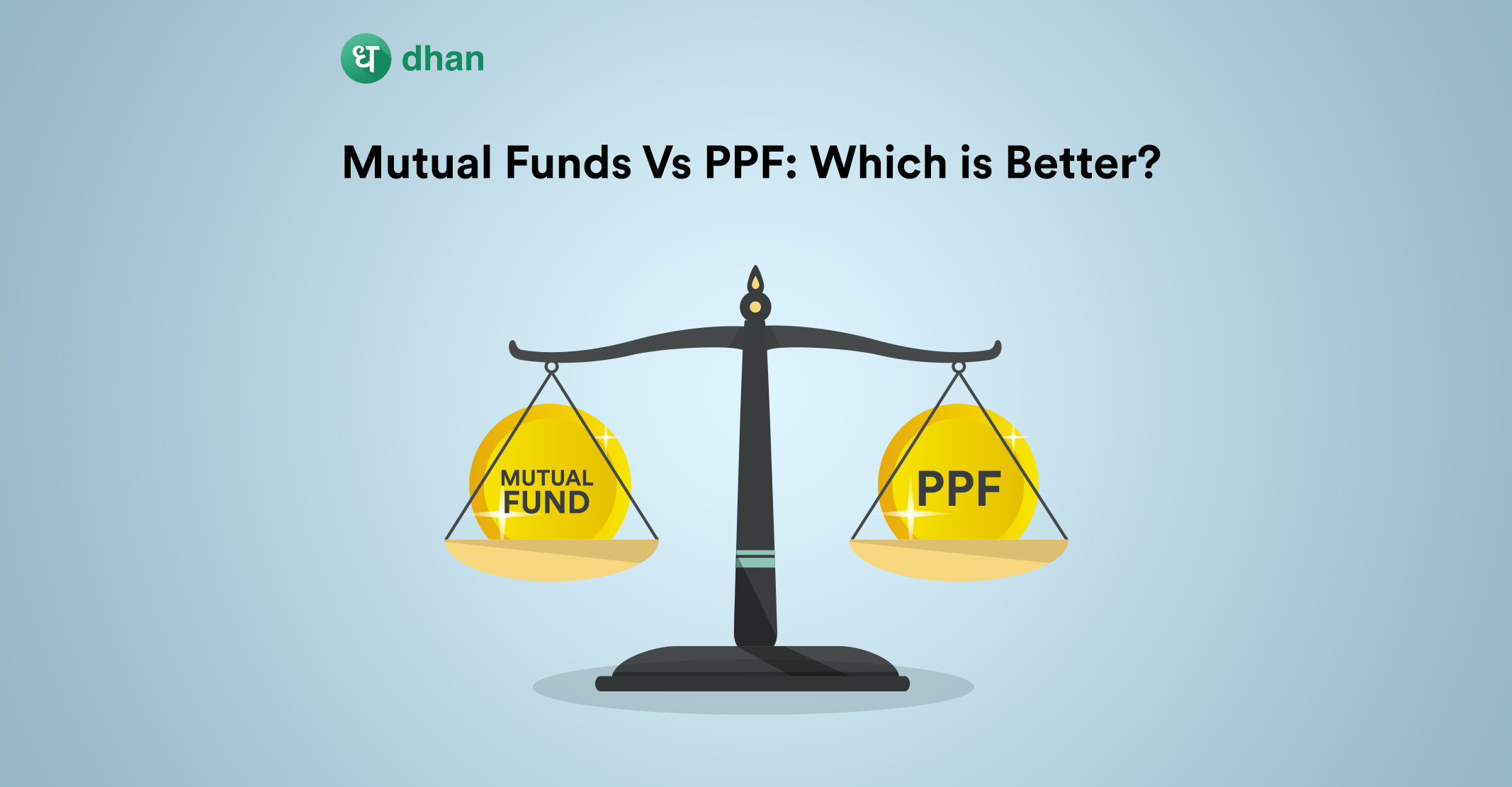Online mutual funds have become a popular investment over the years, peaking at an AUM of ₹39.4 Trillion as of February 2023. Yet, there’s a school of thought which prefers government-backed investments like PPF over mutual funds.
The question is, which is better PPF or mutual fund? In fact, should you have to choose between mutual funds and PPF at all in the first place? That’s what we will examine in this blog about Mutual Funds Vs PPF.
What are Mutual Funds?
Think of a mutual fund as a pool of money that’s obtained from several investors. This pool of money is then invested in stocks, bonds, ETFs, gold, and other assets based on the mutual fund’s investment objective.
This investment objective combined with the assets that the mutual fund invests in dictates risk. A mutual fund that invests in equity shares would be significantly riskier than a debt fund that invests in fixed-interest securities.
Much like PPF, risk determines the returns when it comes to mutual funds. Different types of mutual fund schemes generate 3-12% returns on average, discounting the load and other fees.
All this combined with the fact that professionals manage money when it comes to mutual funds means that the industry has an AUM of ₹39.4 Trillion as of 2023.
What is PPF?
A Public Provident Fund (PPF) is a popular investment option that offers a fixed rate of return. This investment mode is especially popular amongst people who are looking for stable and fixed long-term investment options, think of people who have a low risk appetite or those who’ve retired or want to balance their overall portfolio.
In a PPF, users deposit a certain amount of money every year for 15 years and gain the principal amount plus the interest at maturity. PPF is a government-backed instrument and thus offers security to investors.
You need to only look at the total amount of money deposited in PPFs to understand this.
As of 2020, Indians invested a grand total of ₹897 billion in PPFs. Safety is the key word when it comes to PPF as any government-backed investment scheme is almost always assured in terms of returns. But the flip side of this is low returns. PPFs generate 7.1% P.A. as of 2023.
PPF or Mutual Funds for Your Portfolio?
Now that the base is clear, let’s see which is better PPF or mutual fund based on different factors.
1. Return on Investment
As you already know, PPF offers you a fixed interest rate, and this rate is usually 7 to 8%. The rate might go through changes every year. However, it mostly stays within this range!
When it comes to mutual funds, you will find myriads of schemes that offer varied returns. Liquid funds usually offer 3 to 4%, while equity funds offer 10 %to 12% returns.
There are some asset classes that may offer even higher returns on your investments. However, as with most investments, mutual funds are no exception to market risks. Thus, there are chances that you may receive lower returns than expected.
2. Investment Risk
PPF interest rate is determined by the central government, and since this savings scheme offers you a fixed interest rate, it is relatively risk-free.
Mutual funds encompass various financial securities compiled by asset management companies. The risk varies depending on the type of mutual funds you invest in. While some mutual fund schemes have a low risk, others have a high risk.
3. Lock-In Period
PPF has a mandatory lock-in period of 15 years which means you can only withdraw funds after maturity. There are stringent rules dictating when and how much percentage of the funds can be withdrawn and at which time.
However, most mutual funds categories with the exception of close-ended funds and Equity-Linked Savings Scheme (ELSS) funds do not have any lock-in period. This means that you can exit the mutual funds market at any point in time.
4. Tax Savings
The returns generated from PPF are tax-exempt under Section 80C of the Income Tax (IT) Act, and PPF investments are also allowed for tax deductions up to Rs. 1.5 lakhs a year.
While the interest is tax-free, it must be declared in the income tax return filed annually. All in all, it enjoys the benefits of the EEE (Exempt-Exempt-Exempt) category of tax.
There are some mutual funds known as ELSS, which also offer tax exemptions up to Rs. 1.5 lakh a year under Section 80C.
However, all the other classes of mutual funds are subject to varying degrees of tax rates based on investment type and tenure.
5. Diversification
One factor in which mutual funds far outweighs PPF is diversification. Since your money is only invested in instruments with fixed returns, there is no diversification in PPF.
However, mutual funds are excellent ways to diversify your portfolio as your investment is spread across a multitude of financial assets.
6. Liquidity
It goes without saying that mutual funds have higher liquidity than PPFs. Mutual funds allow you to exit the market even after a single day. However, when you put your money in PPF, you know you are not getting all of it back until the 15-year tenure gets over.
If you have invested in closed-ended funds, there might be a lock-in period, which is still less compared to PPF’s lock-in period. However, exit load still exists for mutual funds if you leave the scheme before a certain period, which usually ranges between 1 to 2% of the NAV.
Conclusion
Undoubtedly, both PPF and mutual funds offer various benefits to investors. The decision between mutual funds vs PPF depends on what you are looking for. Deposits like PPF have been a traditional form of wealth creation for India.
But India is slowly moving towards the market through online mutual funds. While the shift has been gradual, one of the reasons is the risk-reward ratio that mutual funds offer. To answer which is better PPF or mutual fund, you’ll have to evaluate your risk profile and financial goals.
Like this? Then you’ll love:



